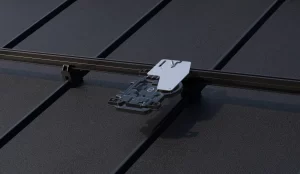The Renewable Shift in Australia’s Energy Landscape
Australia is undergoing an energy revolution as it phases out fossil fuels. With coal currently supplying 60% of the nation’s electricity, significant changes are on the horizon. By 2035, seven of the country’s 16 coal-fired power plants are slated for closure. Additionally, state governments are rolling out programs to phase out residential gas products. For instance, Victoria is ending gas incentives, while the Australian Capital Territory has banned new gas connections for homes starting in 2023. This shift is part of broader strategies to meet net-zero targets.
As Australia transitions to a renewable energy future, with projections showing solar, wind, and hydro accounting for 69% of the electricity mix by 2030, consumers are evolving from passive users to active participants in this new energy paradigm.
Embracing the Electric Home Revolution
Just as electric vehicles (EVs) are key to sustainable transport, the all-electric home plays a crucial role in maximising the benefits of renewable and distributed energy production. Did you know that charging your EV from an all-electric home yields the most savings and the least environmental impact?
Innovators like Henley Homes, which now exclusively builds solar all-electric homes, and ZERO Living, proving that electric homes can generate twice the energy they consume, demonstrate the growing momentum behind home electrification.
Clearing Up Common Misconceptions
Misconception #1: Solar Power Equals an Electric Home
While home electrification begins with solar, it doesn’t end there. Solar panels enable you to generate your own clean electricity, but a true all-electric home also incorporates a home battery. This allows you to store excess solar energy for use during peak times or outages. Transitioning from gas to electric appliances for cooking, heating, and hot water can save thousands annually and provide energy security.
Misconception #2: An Electric Home is Just a Smart Home
Younger generations often associate all-electric living with advanced technology, envisioning homes where everything is controlled by AI. While smart home features like voice control are part of the picture, true home electrification involves integrated energy management. Systems like the Enphase® Energy System™ combine solar, batteries, EV charging, and software into a single platform. This enables you to generate, store, use, and even sell energy, all managed through a mobile app.
Misconception #3: An All-Electric Home Isn’t Worth the Money
One of the biggest misconceptions is that all-electric homes are not a wise financial investment due to high upfront costs. However, with electricity prices expected to rise by 56% over the next two years, the return on investment is substantial. Electrification can potentially eliminate electricity bills, offering long-term savings and energy independence.
Misconception #4: Gas is Cheap and Healthier than Coal
Contrary to popular belief, gas prices are set to increase by 40% in the next two years. Additionally, burning gas at home poses health risks, including respiratory issues from nitrous oxides and particulate matter. Gas appliances are linked to 12% of childhood asthma cases, comparable to the effects of household cigarette smoke. Eliminating gas makes your home healthier and safer.
Join the Movement with Transparent Solar Solutions
At Transparent Solar Solutions, we are committed to helping Australians make informed decisions about home electrification. Join us in leading the switch to a cleaner, more sustainable future.
FAQs
- Can I charge my EV with solar panels?
- Yes, with the right equipment, you can leverage solar power to charge your EV. Transparent Solar Solutions offers integrated systems for seamless charging.
- How many solar panels do I need?
- This depends on your EV’s efficiency and your driving habits, but typically 10-15 panels are needed.
- When is the best time to charge?
- The best time is during peak sunlight hours, usually from late morning to mid-afternoon.
- Do I need a special charger?
- Yes, a solar EV charger is ideal for efficient, clean energy use.
- Are there incentives?
- Various government incentives and tax credits are available to help reduce installation costs for solar panels and EV chargers.
- How long does it take to charge an EV with solar?
- Charging time depends on the system’s capacity and the EV’s battery size, with a full charge taking several hours.
- Do I need battery storage?
- While not necessary, battery storage enhances energy independence and efficiency, especially when sunlight is unavailable.
Let Transparent Solar Solutions guide you through the journey to an electrified, sustainable home. Contact us today for more information and personalised assistance.





